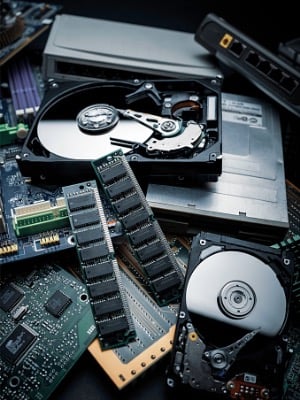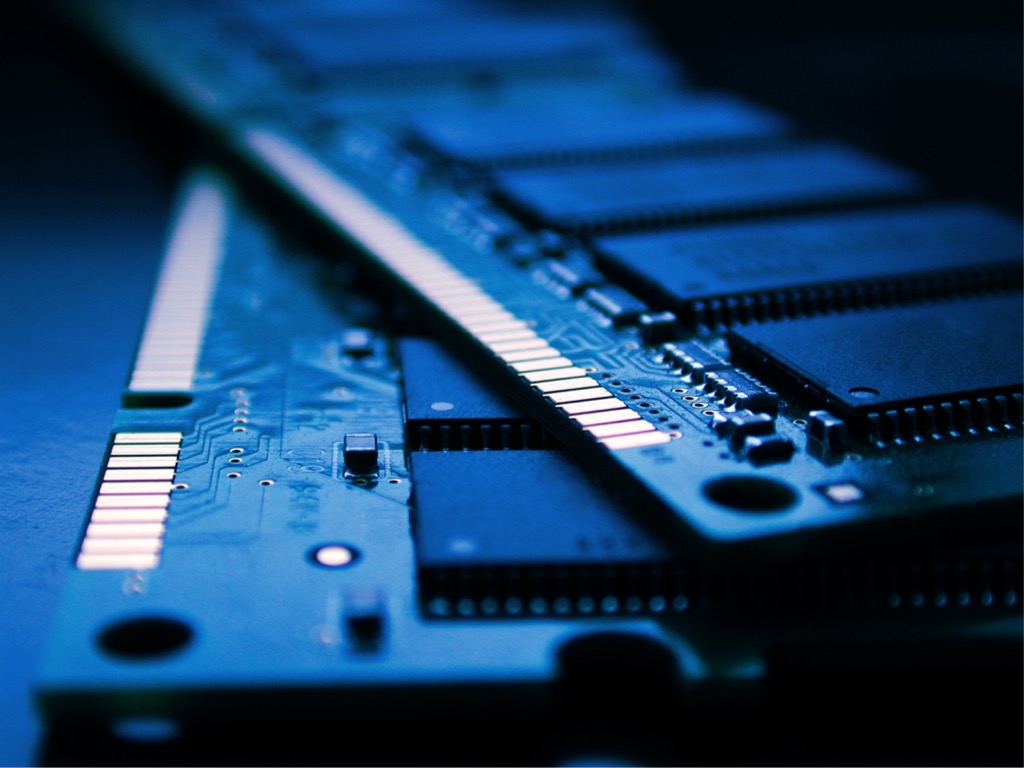E-Waste Facts: Electronic waste (E-waste) is a broad term that can apply to any waste material collected from recycled electronic devices. E-waste can include scrap metal, circuit boards, and other components collected from electronic and electrical devices. E-waste also refers to discarded electronic devices that are not recycled.
E-waste management has to be handled responsibly to protect human health and natural ecosystems. Below are 12 e-waste facts designed to help you take the next steps. After reading these electricity waste facts, you will better understand how to dispose of your e-waste responsibly.
1. E-Waste Facts: E-Waste Poses Data Security Concerns
Hackers frequently target businesses and individuals, and one of the easiest ways for them to do so is to obtain access to your discarded laptop, computer or cell phone. According to Cybersecurity Ventures, cybercrimes cost businesses globally an estimated $6 trillion on average annually. Data deletion does not mean it has been destroyed; instead, it has been hidden from view. As a result, your valuable data remains accessible and may be easily recovered.
2. Recycling Companies Protect your Data Privacy
E-waste recycling companies like TechReset have technology professionals on staff who can shred your e-wastesafely and permanently destroy the data on hard drives before it ends up in the recycling process. Proof of the secure destruction of your data should be a priority when looking for an e-waste recycling company.
3. Incineration is Bad for the Environment
Heavy metals and plastics that are not recyclable are used in the manufacture of electronics. Burning e-waste means plastics and heavy metal particles are released into the air, contaminate the surrounding soil and groundwater, and threaten health. Recycling rather than incinerating helps reduce the amount of harmful e-waste sent to landfills, which reduces the risk of contamination to soil and groundwater.
4. Small Devices are Becoming Problematic
Researchers recently analyzed the contents of e-waste generated to determine what items were being disposed of; almost one-third of them were small devices like smartphones and tablets. In addition, it is expected that millions of individuals will continue to replace their phones and smartphones in the coming years, resulting in a rise in the proportion of e-waste from small devices.
5. E-Waste can be Recycled
 E-waste recycling, or e-waste disposal, results in a wide range of benefits for the environment and the economy. For example, recycling e-waste uses less energy than producing new materials, reducing greenhouse gas emissions according to electronics recycling statistics. But, how much e-waste is recycled? Unfortunately, not much. Canada only recycles about 1 million tonnes of e-waste, about 20% of the total e-waste produced.
E-waste recycling, or e-waste disposal, results in a wide range of benefits for the environment and the economy. For example, recycling e-waste uses less energy than producing new materials, reducing greenhouse gas emissions according to electronics recycling statistics. But, how much e-waste is recycled? Unfortunately, not much. Canada only recycles about 1 million tonnes of e-waste, about 20% of the total e-waste produced.
6. Who Produces the Most E-Waste?
How much e-waste is discarded each year? Asia and the Americas are the highest producers of e-waste. E-waste recycling in Canada has significantly increased since 2012 when legislation was passed requiring companies to handle e-waste responsibly by implementing e-waste management systems and e-waste disposal processes. The Americas accounts for over 13.1 metric tonnes of e-waste, according to The United Nations 2020 e-waste Monitor report.
7. E-Waste Facts: Recycling E-Waste Saves Energy
Recycling uses far less energy than mining for new materials. The scarcity of some natural resources needed to produce electronics reduces natural resources and increases the cost to extract them. By recycling more e-waste, more of these materials can be recovered and reused without mining more natural resources.
8. Mobile Phone use has Increased E-Waste
How many old mobile phones do you have lying around in draws in your house? The number of mobile phones in use on the planet has reached an all-time high, with over 7 billion devices now in circulation. Furthermore, according to Ericsson, there are 7.8 billion active SIM cards in use compared to around 7.9 billion people on Earth. In most cases, these older devices are still fully operational, just replaced by the latest model. Many organizations help by passing these on to those that need assistance and can be repurposed, prolonging their useful life and preventing them from being thrown away. For those that cannot be repurposed, the recovery and reuse of components and materials from these devices go a long way to minimizing e-waste.
9. Discarding E-Waste in Landfills Leads to the Loss of Valuable Raw Materials
Not only do electronic devices contain useful raw materials like gold, copper, silver, and nickel, but they may also be extracted and resold to manufacturers who use them to manufacture new items. When e-waste is disposed of in landfills, these materials are lost and, in some cases, cause environmental damage. It’s been estimated that the total value of the raw materials contained in e-waste is more than $62.5 billion, according to a UN report.
10. Reducing the Cost of Mining Heavy Metals
Recycling heavy metals from old electronics is a critical step in preventing them from polluting our waterways. If we don’t recycle these metals, manufacturers will have to rely on the far more expensive technique of mining for virgin ore to produce new ones. About 9 percent of solid waste in landfills are metals, with a percentage being heavy metals contained within discarded electronics.
11. E-Waste Recycling Creates Jobs
Recycling and reusing electronics can help save energy throughout, but it still requires human labour for sorting, processing and transportation. As a result, e-waste recycling is becoming a significant economic contributor. According to the Coalition for American Electronics Recycling, over 42,000 new jobs can be created annually with a $1 billion increase in annual payroll. All of this is good news for economies and the planet.
12. Some Retail Stores Accept E-Waste for Recycling
One of the many reasons people don’t recycle old electronics is because they lack the information needed to get end-of-life electronics into the recycling process. When we don’t know where to take computers, IT equipment, cellphones or televisions, it seems simpler to just toss them in the garbage. However, certain electronic retailers will take your unwanted devices and recycle them regardless of where you bought the item. Retailers such as Best Buy are one of the many retailers that accept e-waste for recycling.
How TechReset Helps with E-Waste Management
With some of these e-waste facts in mind, the next question is how can TechReset help with any e-waste management needs? While not a consumer-electronics recycler TechReset is focused on providing a secure and environmentally responsible approach for businesses to get rid of their old computer equipment and e-waste.
More than 90% of the equipment we receive from major corporations, healthcare institutions, government agencies, and other organizations is repurposed. We issue a Certificate of Data Cleanse or Destruction that certifies that all sensitive information has been safely removed from your devices, as well as a Certificate of Landfill Diversion indicating that your equipment was recycled rather than disposed of in a landfill.
Find out how much your e-waste is worth by using our ROI calculator.
